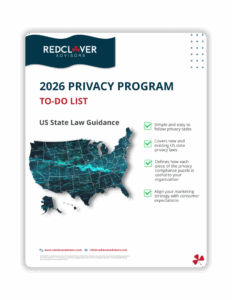Renovating your kitchen can be a time-consuming project; depending on your vision, it can take up to four months, and often longer if you’re the DIY type.
Now, you can speed it up by skipping permits, hiring the first contractor who responds on Angi, and picking the most immediately available materials. However, if you take that approach, you could just as easily end up with crooked drawers, code violations, and a layout you’ll regret for years, rather than your dream kitchen.
Picking out privacy software can follow a similar pattern. The timeline from vendor selection to operational deployment runs six to twelve months for most organizations. But like many ill-advised renovations, they’re often decisions made with a sense of urgency: an audit, an overload of DSRs, or a regulatory process.
When you need a solution in three months but proper implementation takes nine, you end up choosing based on speed rather than fit.
Table of Contents
What makes privacy software evaluation complex
Privacy software has become infrastructure. Around 80% of Fortune 500 companies now rely on privacy management platforms to handle compliance requirements, according to 2023 data. Implementing these tools takes time and careful planning.
Privacy software takes anywhere from 24 days to over five months to implement, depending on the vendor and your existing systems. Those timelines assume everything goes smoothly. In reality, around 42% of organizations view legacy IT as a significant hurdle in compliance with modern privacy regulations when integrating new privacy software with their existing IT infrastructure.
Each implementation brings its own set of challenges. Software that can’t connect to your data sources creates blind spots in compliance. Tools that flag every instance of a common name lead to more manual work. Platforms that lock you into rigid workflows don’t adapt when regulations change or your business evolves.
Finding the right solution requires asking detailed questions about how the software will work in your specific environment.
Four types of privacy software to evaluate
To run a comprehensive privacy program, there is a range of different tools you’ll need in your toolkit, each addressing a specific aspect of compliance and data management. These include:
- Data inventory tools that give you visibility into what personal data you have and where it lives
- Privacy rights platforms that help you respond to individual requests
- Privacy impact assessment software that lets you evaluate risks before they become problems
- Consent management platforms that handle the collection and tracking of user permissions
Depending on your business’s specific privacy obligations, you may need some combination of them, though the sophistication and automation level you need varies based on your data volume, processing complexity, and risk profile.
Data inventory tools
Data inventory tools map where personal data lives across your systems. Without this, you can’t respond to DSRs, conduct privacy impact assessments, or execute deletion requests accurately.
When evaluating these tools, the key question is whether they can actually find your data. Modern data integration platforms must handle data mapping across data lakes, warehouses, and SaaS tools—not just traditional databases.
Scalability matters because, as your data volumes grow, the tool needs to keep up. Ask about performance benchmarks at your expected data scale.
Integration is a make-or-break factor if the tool can’t connect to where your data lives—your CRM, marketing automation platform, customer support system, cloud storage—it doesn’t matter how sophisticated the discovery algorithms are.
What questions should you ask your data inventory software vendor?
- How do you handle discovery in cloud environments versus on-premises systems?
- What happens when we add new systems—is rediscovery automated?
- How do you classify data? (Machine learning-based vs. pattern matching vs. manual tagging)
- Can you track data flows between systems, or just inventory data at rest?
- What’s your false positive/negative rate for data classification in real-world deployments?
Privacy rights platforms
Privacy rights platforms (also called DSR tools) handle the end-to-end process of responding to individual requests for data access, deletion, correction, or portability.
When evaluating privacy rights tools, workflows need to line up. On paper, processes might look linear—request comes in, you verify identity, find data, respond.
But in reality, privacy rights also involve escalations, partial fulfillments, and unexpected snafus.
That means it’s essential to test privacy rights functions with your actual data. For example, how do automated data discovery and redaction capabilities function in your system? If they’re flagging every instance of “John Smith” across your systems, you might find yourself with more manual reviewing than expected.
What questions should you ask your privacy rights software vendor?
- How do you handle identity verification?
- What’s your false positive rate on automated data discovery in production environments?
- Can we customize workflows for different request types and legal requirements?
- How do you handle requests that span multiple systems with different retention rules?
- How do you integrate with third-party subprocessors?
Privacy impact assessment software
PIA software helps operationalize the PIA process, documenting the data you’re processing, why you need it, what risks it poses to individuals, and how you’ll mitigate those risks.
The key question is whether the tool actually helps you think through these questions or just creates documentation. It’s the difference between a contractor who reviews your renovation plans to catch problems before construction starts versus one who sends the crew to your house without blueprints.
It’s important PIA software integrates effectively with your data inventory. If you’re duplicating data entry between systems, the tool is creating work rather than streamlining it. Similarly, since PIAs often require input from multiple teams—privacy, security, legal, and the business units doing the processing—the software should support collaboration without bottlenecks.
As you consider options, look for tools that let you customize the assessment framework rather than forcing you into a generic template. Your PIA software should be able to adapt to your organization’s complexity, whether scaling from basic threshold checks to comprehensive assessments based on real-life risk indicators. Understanding what triggers a reassessment—new vendors, changed processing, regulatory updates—is also critical for keeping assessments current.
What questions should you ask your privacy impact assessment software vendor?
- Does this integrate with our data inventory system, or are we duplicating effort?
- How do you handle ongoing monitoring versus point-in-time assessments?
- Does the tool support if/then logic to route users through relevant assessment paths based on their responses?
- Can we create threshold questionnaires that trigger full assessments only when risk indicators are present?
- What risk framework does the tool use? Can we customize scoring criteria to match our risk profile?
- What triggers reassessment? (New vendor, new processing, regulatory change?)
- How does the tool facilitate input from multiple stakeholders without creating bottlenecks?
Consent management platforms
Consent management platforms (CMPs) display consent banners and manage user permissions for data collection across your digital properties. Without proper consent management, you can’t legally collect data in regulated jurisdictions.
Make sure the platform can handle your technical requirements without slowing down your site. Also consider CMP performance; consent banners often load before your site does, and a slow CMP creates a bottleneck that affects page speed and user experience.
Beyond speed, consider how the platform handles geo-targeting. Automatic detection and framework application can save time compared to manually configuring consent requirements for each jurisdiction.
What questions should you ask your CMP software vendor?
- Can you run performance tests in our staging environment and provide benchmark data?
- Can we A/B test consent experiences?
- How does it scan for and flag new cookies?
- Can it categorize different cookies?
- Can you customize it to different jurisdictions and capabilities?
- For geotargeting, does the system automatically detect user location and serve the appropriate consent framework, or does it require manual configuration?
- What’s your approach to first-party data collection as third-party cookies phase out? Show us your roadmap, not just current functionality.
- Does your CMP meet certification requirements for the ad platforms you use?
Partner with Red Clover Advisors
Red Clover Advisors helps organizations evaluate and implement privacy software that actually fits their technical requirements and compliance needs. We assess your current infrastructure, identify gaps in data management and consent handling, and guide vendor selection based on your privacy needs, not a sales demo.
Not sure where to start? Check out our resources:
- Guide: Vendor Management Process
- Choosing Privacy Rights Automation Software
- Guide: Privacy Program Management
Schedule a consultation to discuss how we can help you select privacy software that works for the long term—without the pressure to rush decisions that become infrastructure you’ll live with for years.
2026 Privacy Checklist
Check out our Privacy Checklist for tips and practical guidance to establish a sustainable compliance program.



